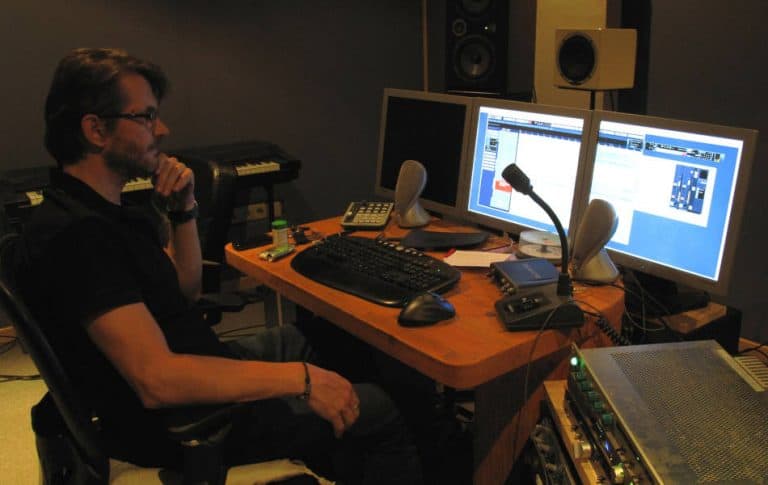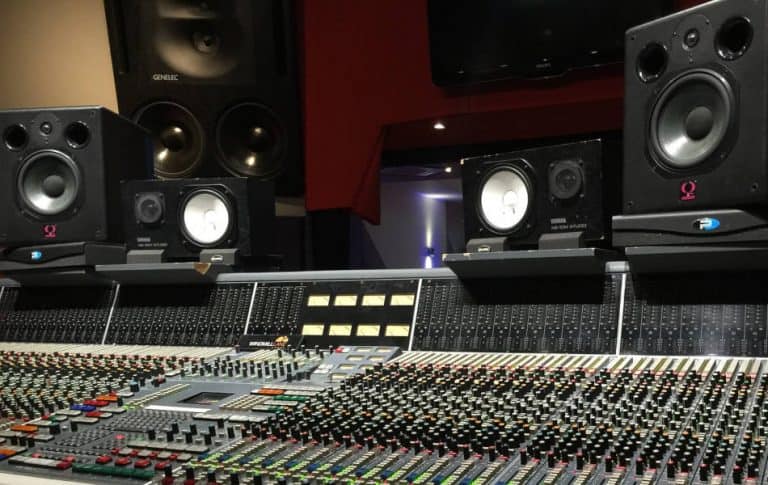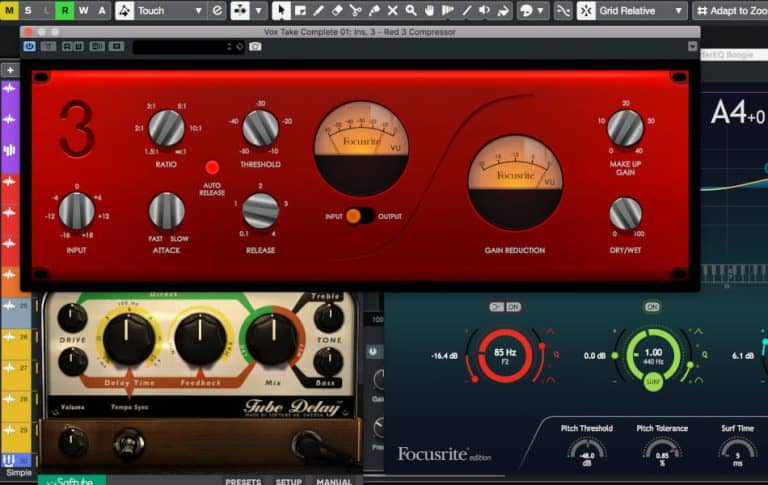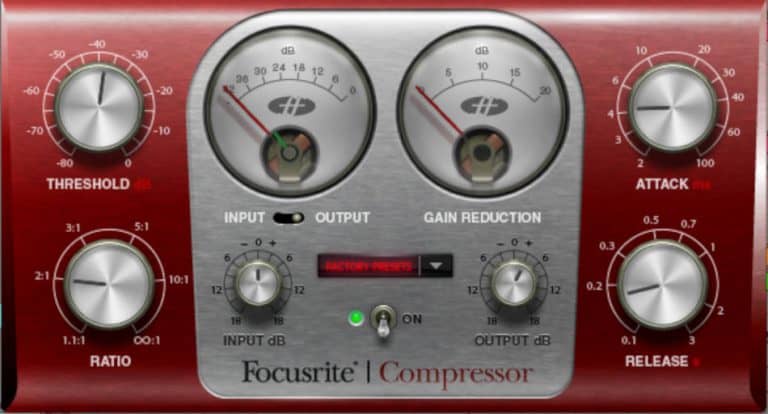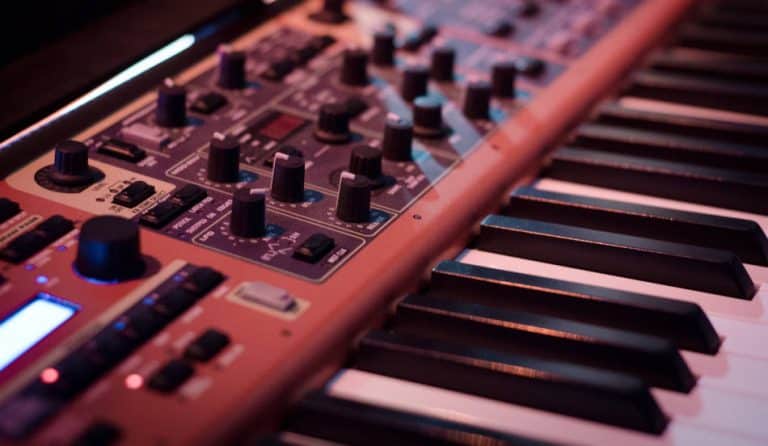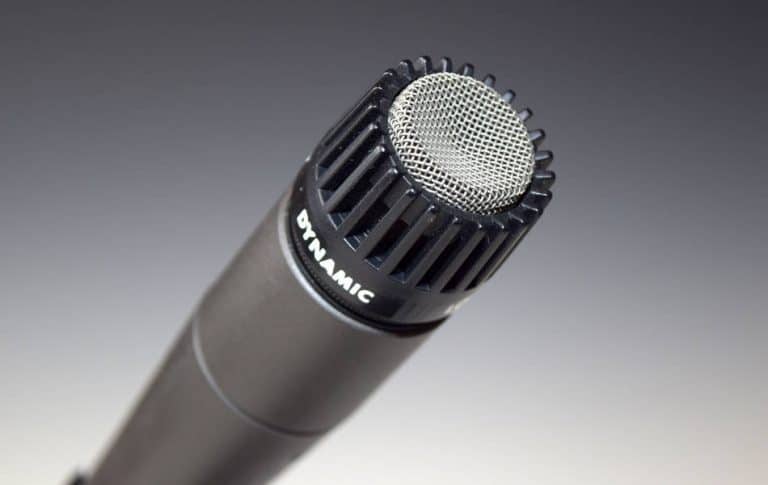Why It’s Worth Getting Studio Monitor Stands
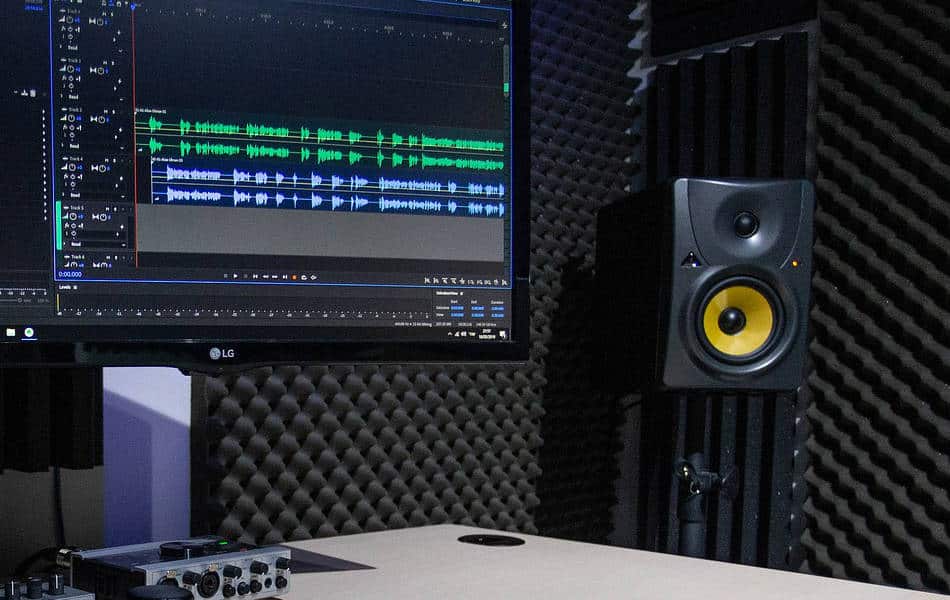
Since there’s so much studio equipment to buy, you might not think that getting speaker stands for your studio monitors is a priority, or even necessary.
I started to research studio monitor stands when I ran out of space on my desk for my speakers, and I discovered there are more reasons for getting them than I thought.
Studio monitor stands can increase working space on your desktop, help you to position your monitors horizontally and vertically, and reduce sound interference caused by placing speakers on a flat surface like a desk.
You can spend a lot of money on studio monitors, and just placing them on a desktop may not enable you to get the best from them. Using monitor stands can help you to address this.
What Are Studio Monitor Stands?
As the name suggests, studio monitor stands are stands for putting your studio monitors on. Sorry, it’s hard to make it sound more exciting that that, but please read on.
There is normally a base at the bottom, a platform for placing the speaker on at the top, and a vertical column connecting the two.
Having the each speaker on its own stand allows you to position the monitors either side of your desk or workstation.
Most monitor stands are height adjustable so you can make sure they are properly positioned vertically as well as horizontally.
It’s important that the monitor stands support the cabinet firmly and prevent vibrations being transferred to whatever the stand is on, e.g. the floor or desktop.
4 Benefits of Studio Monitor Stands
Placing your monitors on purpose-built stands, rather than placing them on the desk, brings some benefits. Some are fairly practical and mundane, others relate to the quality of sound you hear.
1. Frees up Space on the Desk
The reason I started looking into studio monitor stands was that I was running out of space on my desktop, and my speakers were covering a large area on each side.
Even smallish monitors like the KRK Rokit RP5 G4 (link to Amazon) occupy two areas on the desktop that are 16 x 13 inches, and this is quite a lot of space to be able to free up by using stands.
The idea was to get some stands that would be placed on the floor with the speakers on top, and this would free up quite a bit of desk space space.
I found out that you can also get desktop monitor stands that lift the speakers off the desk and provide some free space between the base and the speaker platform.
Even though the base of the stand is still on the desk you get the sense of more space since there is only the supporting column, or frame, above the base.
Some monitor stand designs avoid having the base of the stand on your desk by using a clamp system. You clamp the bottom of the stand to the desktop, which only takes up a very small amount of space at the edges. You can see an example on Amazon here.
This wasn’t such a good option for me since I really wanted to completely free up the space on my desk for other equipment, so I was focused on the floor stands.
2. Helps to Position Monitors Properly
Having your monitor speakers on stands helps you to position them exactly where they need to be. There are a couple of limitations though.
With desk-mounted stands monitor placement is still limited by the dimensions of your desk – you can’t move them further away from you than the edge of the desk.
However, with floor stands you can’t place the monitors closer to you than the edge of the desk.
This is something to consider when choosing your monitor stands. If you have smaller near-field monitors you might need to use desktop stands to make sure they are close enough to you.
If you have larger monitors that need to be further away from you it’s probably better to use floor stands to place them appropriately.
You probably know that the two monitors and your head are supposed to form the three points of an equilateral triangle (all sides the same length), and using monitor stands helps to achieve this.
Monitor stands also enable you to place the speakers at the right height for critical listening. The stands need to be height-adjustable for this, so it’s worth checking before you buy.
The drivers (speaker cones), particularly the high frequency tweeters, need to be in line with your ears. If the monitors are placed directly on the desk they will probably be too low.
3. Stands Makes Monitor Speakers More Portable
An unexpected benefit of using studio monitor stands is that it makes the speakers more portable.
When I have the house to myself I like to work outside my little studio room, and move into the kitchen or living room for a change of scene.
Having my monitors on stands lets me take them with me and place them in the best position to listen as I’m sitting working on the sofa or at the kitchen table.
4. Monitor Stands Reduce Sound Interference
When studio monitors are placed on a flat surface like a desk it can change the sound you hear coming out of the speakers.
This is because the sound is reflected off the surface, and the reflected sound waves can interact with the sound waves coming directly to your ears from the speaker, leading to interference.
The surface can also absorb some frequencies, so the amount of this sound reaching your ears is reduced.
Both of these factors result in the sound you hear not being an accurate representation of what is coming out of the monitors.
One of the reasons that studio monitors can be so expensive is that they are designed not to “colour” the sound, and produce an accurate representation of the audio signals they receive.
Placing the monitors on a surface like a desk can reduce their effectiveness for helping you listen critically.
Things to Consider Before Buying Studio Monitor Stands
If you are thinking about buying some monitor stands for your studio there are a few things to bear in mind. Monitor stands aren’t particularly expensive, and they definitely aren’t very exciting, so you might be tempted to pay as little as possible.
Monitor Stands Need to Be Made of Dense Material
The stands need to be robust and made of fairly dense material. If the stands are made of light material then vibrations from the speakers can be picked up and transferred to the stand, leading to sympathetic resonant vibrations.
This can be a particular problem if the upright section is formed from a hollow tube of some kind. In this case the solution is often to fill the hollow section with sand (or something similar) to dampen the vibrations.
It’s worth checking before you buy to see if this will be necessary, or if the manufacturers have already taken care of it.
Do You Need Isolation Pads?
Studio monitor stands normally have a flat platform at the top for placing the speakers on. These plates often have rubber strips that are intended to stop the monitors slipping off and to reduce vibrations from the speakers being transferred to the stand.
These rubber strips are often quite thin and may not reduce transfer of vibrations very effectively, which can affect the sound you hear.
Other monitor stands may not have rubber strips, and use a clamp system to attach the speaker cabinet to the stand. In this case it could be very easy for speaker vibrations to be picked up by the stand.
With either type of stand it’s worth thinking about getting some isolation pads to place under the monitors. These pads are usually made of dense foam to support the monitors while reducing vibration transfer to the stand.
Isolation pads don’t cost very much and it’s worth including them when buying your monitor stands. You could make your own by cutting some foam to fit the monitors, but the pads you buy are normally shaped to hold the monitors securely.
It’s Worth Getting Studio Monitor Stands
Hopefully I’ve been able to outline some reasons why it’s worth getting monitor stands for your home studio.
They can free up work space on your desk, enable you to position the monitors correctly, and help to reduce sound interference caused by surfaces below the monitors.
One thing to bear in mind though is that your expensive monitors can be vulnerable if anyone bumps into the stands, potentially knocking the cabinet off.
This can be a problem in a home studio where space might be limited, or people you live with (especially small people) might not be so careful with your equipment.
Related topics
Studio Monitor Speakers – 5 Things You Should Know About
It can be quite difficult to know what you should be looking for when choosing studio monitors, and what a lot of the information and specifications actually mean. Here we have some information on five things that you should know about studio monitor speakers for home recording studios that you will hopefully find helpful. Check out the article here…
